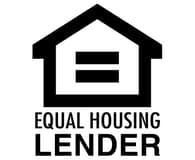The Huntress Home Loan Pro Mortgage Calculator
Use this calculator below to estimate your monthly mortgage payment amount based on the home price, loan term, down payment and interest rate information that you enter.
Here’s how the fields in the calculator work:
Home price. If you've chosen a home and know the price, enter that number here. Play around with it and enter different prices to see how different amounts affect the payment amount.
DownPay. This is the amount that you have saved to to apply to the purchase price of the home that you are buying. The more you put down, the lower your mortgage payments will be. However, if you pay less than 20% down, the calculator will estimate how much private mortgage insurance (PMI) you may need to pay. See PMI below.
Loan Amount. The difference between the actual home price and the down payment.
Interest rate. The calculator will reflect the most commonly offered rates with excellent credit, 740+. You can contact me to confirm today’s mortgage rates for a more accurate number.
Loan term (years). This is the number of years it’ll take to pay off your loan balance. Choose a 30-year fixed-rate term for the lowest possible payment or a 15-year term if you want to save interest and pay off the balance faster with higher monthly payments.
PMI. If you pay less than 20% down, the calculator will estimate how much private mortgage insurance (PMI) you may need to pay (this insurance protects the lender from buyers that may default on their loan).
Annual insurance. Lenders require you to have enough homeowners insurance to repair or replace your home if there’s a loss from something like a fire or weather event. You can also comparison shop insurance companies for best rates, or we can provide you with some referrals.
Annual Property taxes. Property taxes vary by location. You can enter the exact amount if you have this information.
Monthly HOA. If the home is in a neighborhood with a homeowners association (HOA), you can add the monthly fee here.
Loan date. The calculator automatically defaults today’s date.
Total cost breakdown of Principal and Interest
You should really consider looking beyond just your monthly payments while considering a loan offer, such as the term or length of the loan, and different types of loans that you may be eligible for. Your lender can help you determine what type of loan may be best depending on your income and credit score, the location where you are buying, your employment history and other factors. The calculator will only give you the following additional information, which can help you compare the value of different loans:
→ Total loan amount The difference between the actual home price and the down payment.
→ Total interest paid The amount of interest paid over the loan repayment term.
→ Total principal and interest payments The total dollar amount you’ll spend for these expenses in your monthly payment over the life of your loan.
How to read your mortgage payment schedule
A mortgage amortization schedule may appear complex, maybe even intimidating, but it is actually pretty simple. It basically shows you how much of each payment that you make goes toward the principal vs. interest, unless you make additional payments toward your principal as you go. Some things you need to understand about mortgage amortization:
1) You’ll pay more interest than principal toward the beginning of your loan term (during the first few years), similar to an automobile loan.
2) Eventually you will pay more in principal than interest over time.
3) Your monthly principal and interest payment amount does not change with a fixed-rate loan, however, you can shorten the term of your loan by making additional payments toward the principal of your loan. One additional payment per year, can reduce the term of your loan by several years and save you thousands of dollars.
4) When you make the last scheduled payment, your loan balance will be paid in full, unless you have an adjustable-rate mortgage (ARM)
Tips to get the lowest monthly mortgage payment for your loan
Consider the type of loan If you are a veteran, a VA loan will generally have some of the best rates available and requires no down payment and no PMI. Or if you are purchasing a home in a rural area, if you qualify, a USDA loan will typically have better rates than a conventional or FHA loan, with no down payment and no PMI.
Select a longer term loan A 30-year fixed-rate loan will give you the lowest payment vs. shorter-term loans.
Make a bigger down payment Your principal and interest payments will drop with a smaller loan amount, and you’ll reduce your PMI expenses. With 20% down, you’ll eliminate the need for any PMI.
Consider an ARM If you only plan to live in your home for a few years, consider an ARM. The initial rate is typically lower than fixed rates for a set period. However, once the initial low-rate period ends, the rate adjusts based on current rates and the ARM term you choose.
Shop for the best rate Studies have shown that comparing quotes from three to five lenders can save you on your monthly payment and interest charges over your loan term. Summit Lending is a brokerage with access to several top lenders and we can do the shopping for you.
Monitor your credit score The higher your credit score, the better interest rates will be available to you.




